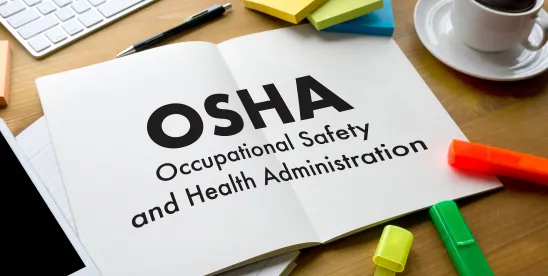Recently, the Occupational Safety and Health Administration (OSHA) made nearly a decade of serious event reporting data—from January 1, 2015, through December 31, 2023—publicly available for review and study via OSHA’s new Severe Injury Report (SIR) dashboard.
Given the creation of this dashboard, it seems reasonable for employers to expect a similar dashboard related to the injury and illness data they have submitted electronically—particularly the data concerning specific injuries contained in the OSHA Form 300.
Quick Hits
- OSHA’s Severe Injury Report (SIR) dashboard provides data from January 1, 2015, through December 31, 2023.
- The dashboard is sortable and searchable by year, NAICS code, state, establishment name, event or exposure, source, nature, and body part.
- OSHA’s data collection efforts will be made available to the public in increasingly searchable, digestible, and understandable ways.
Background
On January 1, 2015, OSHA began to require employers to report “serious events,” which were described to include deaths, in-patient hospitalizations, amputations, and eye losses. (See 29 C.F.R. 1904.39.) Prior to that date, employers were required to report fatality and catastrophic events, which did not include amputations or eye losses. Moreover, “hospitalization” required three people be hospitalized, not just one. The reporting of those serious events is accomplished in a number of ways, including by calling the applicable area office, completing the “Serious Event Reporting Online Form,” or calling 1-800-321-OSHA (which is the designated after-hours number for called-in reports).
In response to almost all of those incidents, OSHA initiated either an actual on-site inspection or a “paper inspection,” often in the form of a “Rapid Response Investigation” (RRI). While the former is conducted by OSHA compliance officers, referred to as Certified Safety and Health Officials (CSHOs), the latter is an investigation and report undertaken by the employer. The RRI, if a response is not satisfactory or the cause of concern, can trigger an actual on-site inspection by a CSHO. The failure to submit a Serious Event Report can form the basis of an OSHA citation when OSHA learns of that failure.
Related to OSHA serious event reporting is the OSHA recordkeeping requirements. The Occupational Safety and Health Act of 1970 explicitly directs OSHA to collect such data, which the agency has done for decades, but until recently, OSHA only collected those records from employers subject to an OSHA inspection. That recently changed, and now only employers of a certain size and/or of a certain North American Industry Classification System (NAICS) code have to submit those records electronically every year. This data is collected and available for review by OSHA and the public as a whole, albeit only in the form of an extremely large and somewhat unwieldy spreadsheet.
Severe Injury Report Dashboard
The serious event reporting data was previously not publicly available, but that recently changed with OSHA’s creation of the SIR dashboard. OSHA has made nearly a decade of data available for review. (The currently available data covers January 1, 2015, through December 31, 2023.)
The data covered by the SIR dashboard is sortable and searchable by year, NAICS code, state, establishment name, event or exposure, source, nature, and body part. The reported injuries and illnesses in state plan states are not included in the data available via the SIR dashboard. The dashboard also does not include reported deaths (although deaths may have ultimately resulted from the injuries listed).
Of note, there is a chart that provides the “top five” in a number of categories, including “events and exposures,” sources, natures, and body parts. Of the top five body parts, fingers, fingernails, and fingertips collectively constitute some 25,421 of 34,718 injuries. Similarly, crush-type incidents account for three of the top five “events and exposures” or some 16,936 of 26,510 serious injuries reported. Interestingly, falls to lower levels (5,915) and falls on same level due to slipping (3,659) round out the top five.
OSHA contends that the purpose for publishing this data is to allow employers to reduce injury rates, but it is not clear that such lagging indicators, particularly when they lag for decades, will be all that terribly useful in doing so. It certainly can afford an employer insight into injury and illness trends and the ability to compare with its peers, but whether this is truly a useful tool for driving down injury rates remains unclear. Like other efforts to publicly share information about employee injuries, inspection outcomes, and enforcement efforts, OSHA recognizes that this information will help the public, current customers, and prospective customers make “informed decisions” using this data.
What seems absolutely clear is that the data collection efforts OSHA has undertaken will be made available to the public in increasingly searchable, digestible, and understandable ways. Serious Event Reports will be viewed by the public, so employers may want to ensure that they carefully craft their submissions to ensure that they have carefully and accurately reported the circumstances that triggered the need to report. Insurers, litigants, state and local regulators, and others will likely use this data for a variety of reasons, so creating “bad data” will likely come back to haunt the careless submitter. Similarly, given the reasonable expectation that OSHA records will become similarly subject to a “dashboard,” the agency is likely to consider them as potential exhibits in litigation.



 />i
/>i

